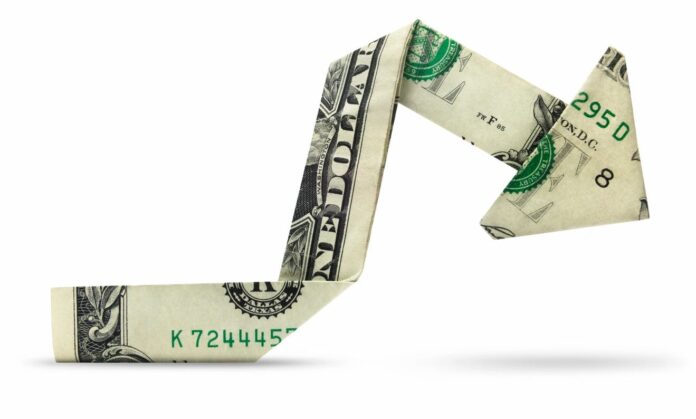Trapped at home, trying to remember what day it is, finishing the “must-do’s” for work and for the family, has prompted many people to become short-term focused. There is going to be life after the pandemic, and we all need to be thinking in terms of the long term, and what retirement can look like if we are proactive now and in the immediate future. It is our responsibility to provide alternatives and solutions to our clients as they come out of their individual bunkers blinking in the light of day as they attempt to adjust to the post-pandemic world’s New Normal.
Risk of Recession or Depression
More than ever in our lives, we fear an extended recession or major depression because of COVID-19.
- The reality is that many restaurants will not re-open; some had marginal profitability even before COVID-19, and the strain of takeout and curbside delivery, with reduced sales in a dining room, will doom many of these veritable institutions not to re-open.
- Retail stores with inventory already faced tough competition from the internet; now an ever increasing number of buyers have bought more things over the internet, and previously-valued face-to-face interaction is less cherished.
- Movie theaters are endangered, as people become more aware of the dangers, as well as the inconveniences, of leaving home compared to the relative ease and convenience of “streaming.”
- With employers and employees having adapted to remote work, Gartner determined that 25 percent of employers expect 20 percent of their employees to work remotely while another 50 percent expect five percent more of their employees to work remotely,* impacting the transportation and its supporting industries and the clothing and dry-cleaning industries, as well as restaurants and food trucks, etc.
- Commercial real estate will suffer from business closures and remote employment.
- Commercial and residential construction will be depressed.
- While more virtual meetings could benefit productivity and generate savings for employers, this will greatly and adversely impact the travel and convention industry.
- The overall demand for energy will reduce.
- Unemployment in any sector can lead to unemployment in other sectors. Suppliers and vendors will be impacted. For example, reduced advertising will hurt PR agencies, newspapers, broadcast media, printers, the post office, etc.
- State and local government revenues will decrease leading to layoffs and reduced services.
- Mortgage delinquencies threaten residential real estate, banks, and other lenders.
- The insurance industry, which has been reeling from low investment yields for years, will continue to suffer from poor returns and some lines of business will have increased claims prompting carriers to implement changes in available coverages.
- While facing more demand for services, donation-dependent non-profits will receive less funding because donors’ incomes and assets will be depressed.
- International trade is likely to reduce.
- Colleges may be harmed if the value of a diploma is depreciated by poor job prospects, applicants cannot afford attending or people choose not to be on college campuses (the last item seems to be only a short-term threat, though some colleges and universities have already announced no on-campus classes for the Fall 2020 term).
- Artists will face reduced demand.
- Childcare businesses may be harmed by unemployment and more people working from home, or simply from the fear of exposing their children.
Pollution and other environmental challenges might ease because of some of the above factors, as it has in China, Europe, and parts of California, but people’s fiscal and physical health will most likely deteriorate.
Reduced Profitability
Many people do not understand that a small drop in business can plunge an otherwise-healthy business into a loss position and downward spiral. Most businesses, even those which do not suffer reduced revenues, will experience increased expenses and risk.
Equipping employees and possibly customers with protective equipment involves both capital and on-going expenses. Social distancing, ventilation changes, and other necessary business practice changes require re-modeling and reduce the number of clients who can be served. Testing increases operational costs. These factors can also reduce efficiency in serving clients.
Crime rates generally increase when the economy suffers, leading to losses as well as increased security costs.
As a result of these environmental and cultural issues, insurance costs are likely to rise.
Litigation has been an increasing threat in our society and COVID-19 risks elevating litigation risk to an even higher level.
Tax rates are likely to rise as governments try to keep operating at the same level despite reduced taxable income and as the Federal government tries to post-fund its unprecedented legislative responses to the pandemic.
Investment Options
Investment options look bleak. Many of us fear further stock market sell-offs amid a long road to recovery. Of course, we can all identify some industries/businesses which will thrive in the post-COVID-19 economy, but the price of such stocks may be driven up too quickly and to unprecedented levels.
Converting to bonds is scary. With the government printing unprecedented amounts of money, inflation is a threat. Coupled with current low interest rates, the risk of capital losses on current bond purchases seems huge.
Commercial and residential real estate and mortgages could remain safe forms of investments. Taking a look at a Charleston, SC house for sale indicates the market remains resilient. And those businesses that are yet to invest in commercial or industrial real estate, ought to carry detailed research before investing. That is, financing, understanding the business goals, and more importantly, finding the right property. Fortunately, resources like https://patmcbride.com/industrial-property-buyers-guide/ and similar real estate guides can help them plan better.
Commodities also seem riskier.
As in other post-Black Swan periods, many people will value stodgy reliable investments.
Financial advisors are likely to be very busy consulting with clients about allocation and security of assets as well as recent losses. Clients are also more concerned about outliving their own (reduced) assets and the time and money their elders’ potentially debilitating need for long term care could demand.
Financial Services’ Client Mentality
Whether or not their income suffers, most clients have experienced a reduction in the value of their assets and estate. Even those who believe the market will bounce back fear volatility and that the recovery period might outlast their available time frame. That is, they may not have enough years left in their lives to experience the next boom. This might seem to be pessimistic thinking, but pessimism will dominate many people’s investment choices and strategies in the next three to five years.
The proverbial two-edged sword is that not only are their assets and estate lowered, but perceived future risk has increased. People feel a stronger need to protect their children and grandchildren as well as their own lifestyle and ancillary retirement.
Clients may feel both more physically and financially vulnerable than at any other time in history. The fear or mere risk of a sudden disease taking its toll, may prompt many to take preventive or protective measures to deal with such a situation if it were to arise.
People who intended to rely upon their family as caregivers may now question whether they can really count on their family for support. They may recognize that their spouse may not be alive or might not be capable of being a caregiver. They may anticipate that their children might be so stressed trying to protect the child’s spouse and offspring that they may be unable to provide care. Having seen their children trying to balance working from home with home-schooling, etc., they may realize more strongly that they do not want to rely on their family members even if they could do so.
Some people who were convinced that the government would take care of their long term care needs may become less confident because of the COVID-19-related government debt. People with income and assets are now more likely to understand that they will continue to be ineligible for government programs funding long term care costs. Furthermore, government long term care financing has gone almost exclusively to nursing homes, which are a much less attractive caregiving venue post-COVID-19 given the horrific loss of life in these facilities due to the lack of available social distancing, the physical plant, as well as air recirculation in the facility.
If we are to look for silver linings to the otherwise very dark cloud known as COVID-19, then it must be that for an ever growing number of people they are treating it as a wake-up call or fire drill, and are proactively pursuing remedies that will protect depleted portfolios and retirement accounts while taking stock of how the pandemic impacted their families. How many children were available to be of assistance to their parents while at the same time attempting to meet the needs of their own (remote) employment, the home schooling and care of children, as well as the demands of life in general?
In good times many people do not prepare adequately for the unexpected. Like the COVID-19 crisis, the development of a need for long term care suddenly changes the world radically (albeit, unlike COVID-19, only one family at a time). Crisis management, time demands, and financial pressures (increased expenses, loss of income, and potentially untimely liquidation of assets or penalty-laden withdrawals from retirement accounts) dramatically converge and can last a long time, disrupting a family’s future-possibly permanently.
COVID-19 demonstrates how these crises catch us by surprise and the stress of being amid an emergency of uncertain length and impact. Like COVID-19, once the need for long term care starts to develop it is too late to prepare in ways that would have made the situation easier to manage. Stock market, general economy and personal finance fluctuations demonstrate that there is a good chance that a family might have to cope with a long term care situation and economic challenges simultaneously. Indeed, if a family is experiencing a financial setback, a long term care need could absolutely overlap with other economic challenges with disastrous outcomes. How would a family maintain income while providing care? Because of experiencing today’s uncertainty, many people treasure downside protection more than they did in the past.
Clearly, reduced cash flow and assets make it harder to commit to a new on-going insurance premium commitment. But if a commitment is possible, it is more likely to be made.
Linked-Benefit Products are Particularly Attractive Post-COVID-19
Of course, just as one size does not fit all, some people will favor different strategies, but many people will be responsive to linked-benefit life insurance/LTCI products (LB) and may be eager to fund such products by transferring, or re-allocating, assets from low-performing or risky assets.
Insurers will be concerned about profitability but will value the LB market because LB products offset mortality and longevity exposure. If mortality costs increase, long term care costs are likely to decrease and vice versa.
Clients will find LB products very attractive now, for the following reasons:
- Many LB policies are guaranteed. At this time of increased risk and conservatism, guarantees look great to both analytic and emotional buyers.
- The death benefit immediately replenishes some of the client’s estate that has withered in the recent stock market.
- LB products also protect against long term care needs. Earlier, we commented on the increased costs of doing business. The long term care industry will be a magnet for such higher expenses, which means that the cost of long term care services will increase. In turn, those higher costs mean that people will be more inclined to insure.
- LB policies are a better way to self-insure as your beneficiaries risk their death benefit (generally over the first two years of needing long term care) but then inexpensive catastrophe coverage kicks in. The value of such a “stop-loss” type coverage is more appreciated in an era when asset value and income are less secure.
- Maximum long term care benefits can compound at three percent or according to a medical cost index depending on product. An index could be particularly attractive for those who fear inflation.
- Some LB products permit (out-of-work, perhaps) family members to be paid for providing care, which can be a nice alternative for generations who are concerned about one another or simply wish to be together.
- An inability to afford separate LTCI and life insurance protection may also accelerate interest in linked-benefit products.
- LB policies can do well in any economic environment. In a deflationary economy such as the 1930s, the increasing benefit is further leveraged by reduced cost of care. In an inflationary economy, a medical cost index helps. In a gyrating muddle economy, steady performance is appreciated.
- For clients looking for guaranteed rates, this could be another safe haven for them.
- The tax advantages for employer-paid coverage may have increased value in the future if the USA grapples with spiraling debt by increasing tax rates.
Time to Act
Some of our clients are feeling vulnerable, while others will simply be more receptive to well-placed comments by you on the necessity for insuring themselves against what some consider to be the greatest singular risk that we each face in our retirement.
The need for these insurance products is greater now than ever before; advances in medicine and pharmaceuticals are extending our lives, allowing us to live longer and to die slower. With fewer children in the nuclear family, often scattered across the country (or even the world), and more women in the workplace, we are simply no longer the Walton clan with multi-generational families living under the same roof.
This may be a good time to revisit long term care planning with some clients who did not establish an LTCI plan. Reassure/compliment clients who purchased such coverage (from you or someone else); they may like to purchase more or may have family or friends interested in your help.
While our focus should always be on the best interests of our clients, we must also consider the fact that for any and all of us who shoulder any form of fiduciary responsibility there is an accompanying liability that squarely places targets on all of our chests if we are not addressing this risk with our clients. The Doctrine of Reliance has become a very powerful weapon being successfully utilized by the plaintiffs’ bar before ever increasingly sympathetic courts of law and juries.
Reference:





























